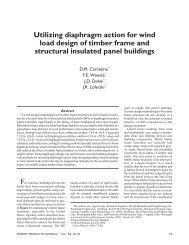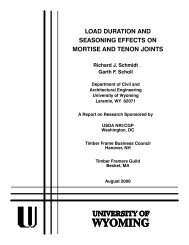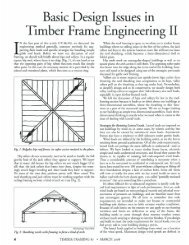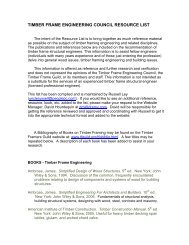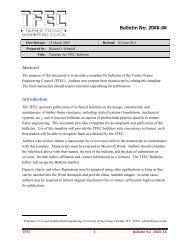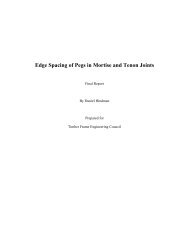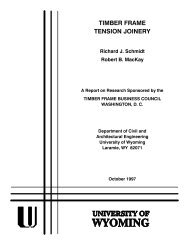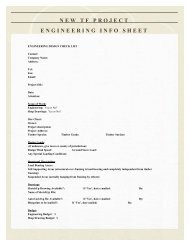Specification for Timber Frame Construction
Specification for Timber Frame Construction
Specification for Timber Frame Construction
You also want an ePaper? Increase the reach of your titles
YUMPU automatically turns print PDFs into web optimized ePapers that Google loves.
3.0 Connections<br />
3.1 General<br />
Chapter 3 applies to the engineering design of connections using wood-on-wood bearing and<br />
wood fasteners, including pegs and wedges, <strong>for</strong> load transfer. The provisions of the<br />
ANSI/AF&PA NDS © shall apply <strong>for</strong> the design of connections using metallic fasteners and<br />
metal connector plates.<br />
3.1.1 Terminology<br />
3.1.1.1 “Edge distance” is the distance l v from the edge of a member or the inside face of a<br />
housing to the center of the nearest fastener, measured perpendicular to grain. When a<br />
member is loaded perpendicular to grain, the loaded edge shall be defined as the edge in<br />
the direction toward which the fastener is acting. The unloaded edge shall be defined as<br />
the edge opposite to the loaded edge.<br />
3.1.1.2 “End distance” is the distance l e measured parallel to grain from the square-cut end of a<br />
member to the center of the nearest fastener. For a member with a tapered-cut end, “end<br />
distance” is the minimum distance measured parallel to grain from the face of the cut end<br />
of a member to a diametrical line oriented perpendicular to grain through the center of the<br />
nearest fastener (see Figure 3A).<br />
TFEC 1-2010 Standard Page 13 June 2010




